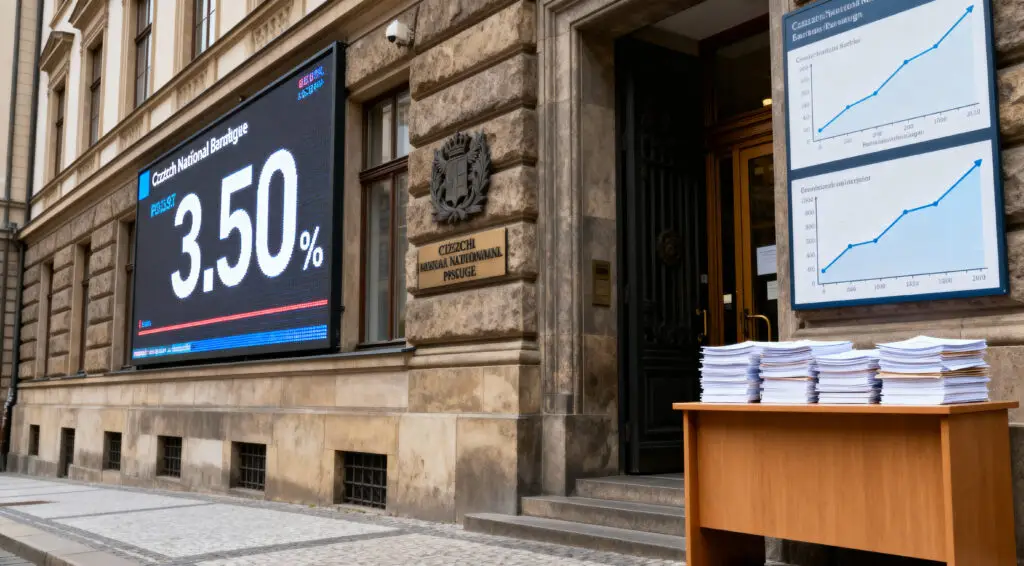Macroeconomic Signals and the Volatility of Cryptocurrencies
Recently, Bitcoin, Ether, and other major cryptocurrencies have seen a significant price drop, with Bitcoin falling below the important $108,000 level. This isn’t just a random event; it’s a clear sign of a maturing market that is becoming more sensitive to the forces of traditional finance.
As investors and traders analyze critical macroeconomic signals, including sticky inflation data and upcoming Federal Reserve decisions, bearish sentiment has grown stronger. This article will provide a detailed look at the main reasons for the recent price movements, highlighting a new era where digital assets are no longer insulated from mainstream economic policy. Understanding this tightening relationship is essential for any modern investor.
The PCE Index and the Challenge of Sticky Inflation
The Personal Consumption Expenditures (PCE) index recently revealed that core inflation has reached its highest annual rate since February, signaling a persistently elevated inflationary environment. The Federal Reserve prefers the PCE as a measure of inflation because it provides a more comprehensive picture of consumer spending.
Unlike the Consumer Price Index (CPI), which uses a fixed basket of goods, the PCE dynamically updates its weights to reflect how consumers change their habits, such as when they substitute hamburger for steak in response to rising prices. This nuance makes the PCE a more accurate indicator of real-world spending habits, and its latest reading has significantly dampened expectations for an immediate interest rate cut.
The Federal Reserve’s Monetary Mandate
The Federal Open Market Committee (FOMC) meeting, scheduled for later this month, looms large over all financial markets. The FOMC, the Fed’s monetary policy-making body, operates with a “dual mandate”: to achieve stable prices and maximum employment. To meet these goals, it uses interest rates as a primary tool to either stimulate or cool down the economy.
When rates are lowered, borrowing costs decrease, injecting liquidity into the financial system and encouraging investment in riskier assets like stocks and cryptocurrencies. Conversely, raising rates tightens the money supply, making safer, yield-bearing assets like bonds more appealing and pulling capital away from speculative markets.
Recommended Article: Bitcoin’s Price Plunge: Is $100K The Next Stop?
The Ripple Effect of Rate Decisions
The crypto market’s recent reaction to the PCE data is a perfect example of this mechanism in action. Even though the CME Group FedWatch Tool indicates an 87.6% chance of a 25 basis point rate cut, the market remains on edge.
This apparent contradiction underscores investor anxiety. A lower rate cut or an unexpected hawkish stance from the Fed could trigger a significant and immediate market reaction. The prospect of cheaper capital is a strong bullish signal for crypto, but the uncertainty surrounding the Fed’s final decision is a powerful headwind, causing market participants to hesitate and leading to increased volatility.
The Impact of the Non-Farm Payrolls Report
The Non-Farm Payrolls (NFP) report is another critical economic event that is coming up. Released monthly, the NFP measures the number of jobs added or lost in the United States. As a timely and exhaustive snapshot of the nation’s labor market health, the NFP is a major component of the Fed’s decision-making process.
A stronger-than-expected NFP report, which suggests a robust job market, might lead traders to believe the Fed will delay rate cuts, potentially resulting in decreased demand for risk-on assets. Conversely, a weaker-than-expected report could strengthen the case for a rate cut, potentially boosting the crypto market.
The Mechanics Behind a Liquidity Crunch
The recent drop in prices was intensified by a series of significant Bitcoin whale sell-offs. A “whale” is a term for a holder of a very large amount of cryptocurrency.
When a whale sells a substantial portion of their holdings, it can flood the market with sell orders, overwhelming the existing buy orders and causing a swift price drop. This can trigger a “liquidity crunch,” a situation where there are not enough buyers to absorb the sell volume without causing massive price fluctuations. This sudden lack of liquidity can make it difficult for other traders to exit their positions without significant losses.
The Cascade of Leveraged Liquidations
The cascade of selling initiated by whales can trigger the liquidation of leveraged positions. A leveraged position is a trading strategy where an investor borrows funds to increase their market exposure. When the price of the asset falls, these positions can be automatically closed, or “liquidated,” to prevent further losses, adding even more sell pressure to the market.
The combination of whale activity and leveraged liquidations creates a powerful domino effect, leading to the rapid and painful declines we have seen. This phenomenon highlights a key vulnerability within the highly leveraged crypto trading ecosystem.
Key Indicators to Watch in the Coming Weeks
The short-term future of the crypto market is inextricably linked to the traditional financial calendar. The key psychological support level for Bitcoin is now considered to be $100,000, and a breach of this mark could trigger a much broader crisis.
For investors, paying close attention to the upcoming NFP report and the FOMC meeting is crucial. How the market reacts to these events will be a major determinant of whether the current bearish sentiment continues or if a recovery is on the horizon. This period serves as a powerful reminder of the growing interconnectedness between crypto and the global economy.























